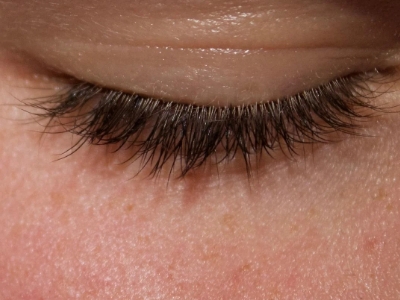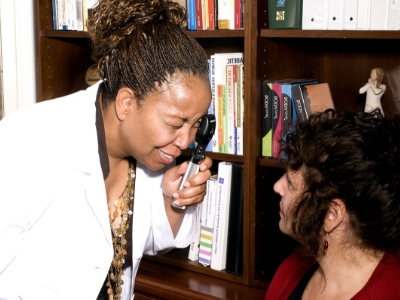Symptoms and Causes of Lazy Eye

A lazy eye is also known as amblyopia. This condition is characterized by a reduced vision in one eye caused by abnormal visual development early in life. The lazy eye often wanders inward or outward. This condition usually develops from birth up to age 7 years. It is the leading cause of decreased vision among children. Rarely, lazy eye affects both eyes.
Early diagnosis and treatment can help prevent long-term problems with your child’s vision. The eye with poorer vision can usually be corrected with glasses or contact lenses, or patching therapy.
What are the symptoms of a Lazy Eye?

The symptom of the lazy eye may include:
- Squinting or shutting an eye
- Head tilting
- Poor depth perception
- Abnormal results of vision screening tests
- An eye that wanders inward or outward
- Eyes that appear to not work together
See a doctor if you notice an eye wandering after the first few weeks of life. A vision check is especially important if there’s a family history of crossed eyes, childhood cataracts, or other eye conditions.
What causes Lazy Eye?
A lazy eye develops as a result of abnormal visual experiences early in life which alter the nerve pathways between the thin layer of tissue behind the eye and the brain. Weakened eyes are less sensitive to visual stimuli. As the ability of the eyes to work together diminishes, the brain suppresses or ignores input from the weaker eye. Lazy eyes can be caused by anything that blurs a child’s vision or causes the eyes to cross or turn out. Among the most common causes are:
- Muscle imbalance (strabismus amblyopia)
- The difference in sharpness of vision between the eyes (refractive amblyopia)
- Deprivation is a problem with one eye.
Diagnosis of Lazy Eye

A doctor will perform an eye exam to check for eye health, wandering eyes, differences in vision between both eyes, or poor vision in both eyes. The eyes are usually dilated with eyedrops. It is common for eye drops to cause blurred vision for several hours to a day. The method used to test vision depends on your child’s age and stage of development:
- Preverbal children – a lighted magnifying device can be used to detect cataracts.
- For children aged 3 and older – tests using pictures or letters can assess the child’s vision. Each eye is covered in turn to test the other.
Treatment for Lazy Eye
Treatment options depend on the cause of the lazy eye and on how much the condition is affecting the vision. Your doctor might recommend:
- Corrective eyewear
- Eye patches
- Bangerter filter
- Surgery
- Eyedrops
For most children with lazy eyes, proper treatment improves vision within weeks to months. Treatment might last from six months to two years.



